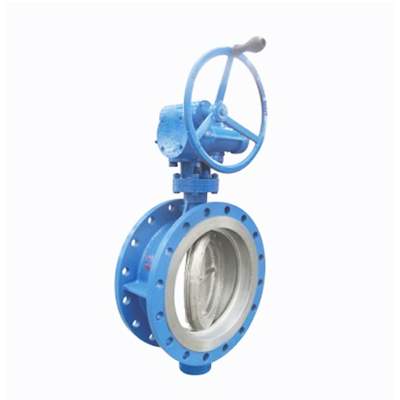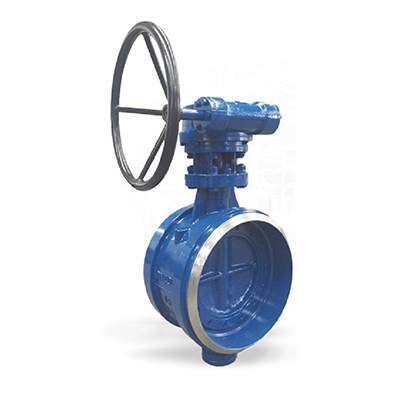Welcome to My Blog!
Before we dive into the content, if you’re interested in our products or have any questions, please feel free to visit our Contact Us page on the website. Our team is ready to assist you with inquiries, orders, or any support you may need.
Now, let’s get started on our journey together. I hope you find the content here insightful, engaging, and valuable.
Introduction

When it comes to fluid control systems, selecting the right valve is key to maintaining efficiency and reliability. Among the many valve options, valve butterflies are widely used for their ability to regulate flow with minimal friction. Their simple design and quick operation make them ideal for a range of applications. However, choosing the right valve butterfly involves considering your specific needs, the type of fluid, and operational conditions.
In this guide, we’ll help you navigate the process of selecting the best valve butterflies for your system. We’ll discuss the key factors like material, pressure ratings, actuator types, and more, so you can make an informed decision and ensure long-term performance.
What Are Valve Butterflies and How Do They Operate?
Valve butterflies are quarter-turn valves used to control fluid flow. They have a disc that rotates to open or close the valve. When the central shaft turns, the disc moves, either blocking or allowing fluid flow. Their design allows for quick operation and minimal space requirements, making them suitable for both isolation and flow control.
These valves are compact, efficient, and easy to operate, offering fast performance in systems with limited space.
Material Selection: Ensuring Durability and Compatibility
The material chosen for valve butterflies significantly impacts their performance and lifespan. Depending on the type of fluid and operating conditions, the material should be carefully selected.
- Stainless Steel: Offers superior resistance to corrosion and is ideal for harsh, chemical-laden environments.
- Cast Iron: A cost-effective choice for less demanding, general applications.
- Brass: Suitable for low-pressure systems, commonly used in plumbing.
- PVC: Used for non-corrosive fluids at lower pressures.
Selecting the right material ensures your valve operates smoothly, even under tough conditions, and extends its lifespan.
Pressure and Temperature Ratings: Matching Valve Butterflies to Your System
Each valve butterfly is designed to handle specific pressure and temperature conditions. Knowing your system’s operating requirements is essential for selecting the correct valve butterfly.
If your system operates at high pressure or extreme temperatures, make sure the valve is made from materials that can withstand these conditions without compromising performance.
Valve Butterfly Seat Types: What to Look For
The seat of a valve butterfly plays a crucial role in preventing leaks. There are several types of valve butterfly seats available:
- Rubber Seats: Ideal for low-pressure systems, offering flexibility and sealing performance at a reasonable cost.
- Metal Seats: Perfect for high-pressure and high-temperature systems due to their durability and long lifespan.
- PTFE (Teflon) Seats: Excellent resistance to corrosive fluids, making them a go-to choice for chemical applications.
The seat material should be chosen based on the system’s pressure and fluid compatibility to ensure effective sealing and avoid leakage.
Matching Valve Butterflies with Different Fluid Types
Your system’s fluid type is one of the most important factors in choosing the right valve butterflies. Different fluids, such as chemicals, water, or gases, have different properties, such as temperature, viscosity, and corrosiveness, which can affect valve performance.
For example:
- Water: Standard valve butterflies with rubber or PTFE seats may suffice.
- Corrosive Fluids: A stainless steel valve butterfly with PTFE seats will offer the durability needed for harsh environments.
- Slurries or Abrasive Fluids: Metal seats will be required to handle the abrasive particles and avoid valve damage.
Matching the valve butterfly material to the fluid ensures long-term performance and reduces the risk of failure.
Size and Flow Requirements: Choosing the Right Size for Efficiency
The size of a valve butterfly directly impacts its flow rate and efficiency. It is essential to choose a valve that matches the pipe size and the flow rate needed for your system. If the valve is too small for the required flow, it could lead to a pressure drop, while an oversized valve may reduce system control and efficiency.
Key Factors to Consider When Choosing Valve Butterflies
| Factor | Why It’s Important | Questions to Ask |
|---|---|---|
| Material | Affects durability and resistance to corrosion. | What materials are used in your valve butterflies? |
| Size | Ensures proper fit and flow control for your system. | How do you determine the right size for my system? |
| Pressure and Temperature Ratings | Ensures the valve handles the system’s operating conditions. | What is the pressure and temperature rating of your valves? |
| Seat Type | Prevents leakage and ensures tight shutoff. | What type of seat does your valve butterfly use? |
| Actuator Type | Determines ease of operation and automation. | What types of actuators are available for your valves? |
Actuators: Choosing the Right Actuator for Your Valve Butterflies
Valve butterflies can be operated either manually or automatically. The choice of actuator depends on the size of your system and how frequently the valve needs to be operated.
- Manual Actuators: Ideal for systems that don’t require frequent adjustments.
- Electric or Pneumatic Actuators: Suitable for larger, more complex systems that need frequent or automated operation.
Make sure the actuator is compatible with your system’s needs for efficient operation.
Flow Control vs. Isolation: What’s Your Primary Need?
Determining whether you need valve butterflies for flow control or isolation will help guide your selection. Valve butterflies can be used for both, but certain models are better suited for one purpose over the other:
- Flow Control: For modulating flow rates, choose a valve with finer control and adjustable settings.
- Isolation: For completely shutting off the flow, select a valve with a tight seat and durable sealing properties to prevent leaks.
Knowing your system’s needs will help ensure you select the right valve butterfly for your application.
Common Applications for Valve Butterflies in Industrial Systems

Valve butterflies are used in a wide variety of industries, including:
- Water Treatment: Regulating water flow in treatment plants.
- Oil & Gas: Managing flow in pipelines and processing plants.
- Chemical Processing: Handling corrosive fluids with proper material selection.
- HVAC: Regulating airflow in heating, ventilation, and air conditioning systems.
Selecting the right valve butterfly will depend on your industry’s specific requirements.
Ensuring Longevity for Valve Butterflies
Maintaining valve butterflies involves regular inspections, cleaning, and replacing worn-out parts like seals and seats. Proper selection of materials and regular maintenance schedules can help extend the lifespan of your valves and reduce downtime.
Conclusion
Choosing the right valve butterflies for your system involves considering factors such as material, pressure, size, actuator type, and the specific requirements of your application. By carefully evaluating these factors, you ensure that your valve operates efficiently and reliably, minimizing the risk of failure and reducing maintenance costs over time.
Taking the time to select the right valve butterfly will not only optimize your system’s performance but also help you achieve long-term success.
FAQ
How do I know if a valve butterfly is suitable for my system?
Make sure the valve matches your system’s pressure, temperature, and fluid specifications. Refer to the technical specifications for size and material compatibility.
Can valve butterflies be used for both flow control and isolation?
Yes, valve butterflies can be used for both purposes, but ensure that you select the appropriate design for the level of control or isolation you need.
Are valve butterflies suitable for corrosive fluids?
Yes, depending on the material. Stainless steel and PTFE seats are ideal for corrosive fluids and offer superior performance in chemical environments.
